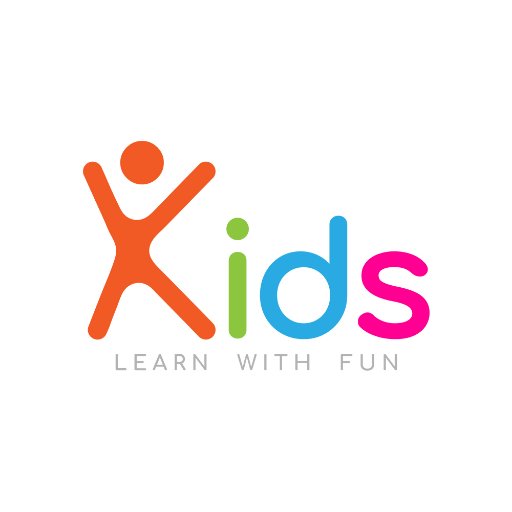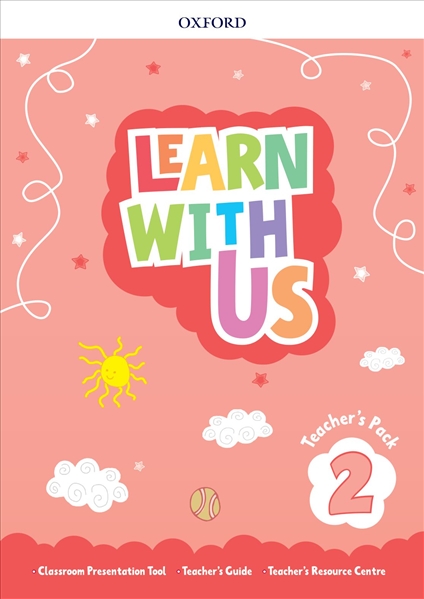Learn with us
Learn with Us - Internet Society
What is Learning @ Internet Society?
Preparing a new generation to succeed as leaders in Internet technology, policy, and business is one of the Internet Society’s key objectives. To be successful, the next generation of Internet leaders will need a wide range of skills in a variety of disciplines – as well as the ability and experience to work with people at all levels of society.
Learning @ Internet Society is a way to bring people together in support of an open, globally connected, secure, and trustworthy Internet. It is a way to empower people with the knowledge they need to take action. And it is a way to prepare people to become the future leaders the Internet needs.
Since its inception in 1992, the Internet Society has been at the forefront of global Internet education, bringing essential information and training to people throughout the world. Between 2013 and 2020, we trained more than 100,000 learners worldwide.
Capabilities: ICT, Internet development and growth, infrastructure and connectivity, and capacity building.
Cultivates a global community, empowered through learning opportunities. They are committed to knowledge sharing and advocacy that contributes to building, promoting, and defending a bigger and stronger Internet.
Builds a global community that is informed and passionate about the shaping and development of the Internet.
What courses do we offer?
We offer moderated online courses, face-to-face courses, and self-paced tutorials for the Internet Society community.
These are available in online and offline mode, and in three languages (English, Spanish, and French). All courses are offered in high-bandwidth, low-bandwidth and text-based versions to accommodate network connectivity issues. All versions adhere to Web Content Accessibility Guidelines (WCAG) 2.1 Level AA and are mobile responsive.
Our courses cover topics important to the Internet industry, particularly for growing and strengthening the Internet. By learning with the Internet Society, participants will be able to:
By learning with the Internet Society, participants will be able to:
- Enhance employability, entrepreneurship, and career skills in the Internet industry
- Connect the unconnected
- Champion protocols that keep the Internet secure
- Build, promote, and defend the network of networks
Online moderated, face-to-face courses and self-paced tutorials
Available in online and offline mode
Available in English, French and Spanish
Offered in high-bandwidth, low-bandwidth and text-based versions
Adhere to Web Content Accessibility Guidelines (WCAG) 2.1 Level AA
Mobile responsive
Who can take our courses?
Everyone. If you would like to learn about the Internet, how it works, and shape its future, our online courses are for you! Our courses are aimed at people with different experience levels.
There are technical and nontechnical courses in our catalog. Technical courses may have prerequisites – requirements you must meet prior to enrollment. Please check the prerequisites before enrolling in a course.
Please check the prerequisites before enrolling in a course.
View Online Course Catalog
View Course Calendar
It was an excellent experience on learning and implementing DNS. Internet Society Network Operations course was very helpful for me, especially [as] it brought an opportunity to uplift my professional career [and earn] a new job.
Deepthi Gunasekara, Network Operations course learner 2020
What else do you need to take our courses?
To take our courses, learners need:
- Internet connection
- Desktop or laptop with at least 1 gigahertz (GHz) 32-bit (x86), or 64-bit (x64) processor and 1GB or RAM or smartphone with similar characteristics
- A modern web browser (Mozilla Firefox, Google Chrome, Internet Explorer 9 or later, Opera, Apple Safari, etc.) running an operating system supported by Virtualbox (Windows, Ubuntu, Mac OS X, etc.).
- JavaScript and cookies enabled
Who are our tutors?
Our tutors are world-class experts who support course delivery by leading live chat sessions, responding to learner questions on the course forum, and sharing their expertise with the community. They have solid backgrounds and deep knowledge about the Internet. Our tutors possess vast expertise, hold relevant academic qualifications, and complete an annual training session to prepare them to be an official Internet Society tutor.
They have solid backgrounds and deep knowledge about the Internet. Our tutors possess vast expertise, hold relevant academic qualifications, and complete an annual training session to prepare them to be an official Internet Society tutor.
What are the learning platform features?
In our 2021 Action Plan, we made the commitment to build expertise and capacity of people so even more of us can help build an Internet for everyone. As part of that commitment, we have decided to enhance our learning platform to improve and expand features as well as continue to increase our course catalog. One particular area we have focused on is improving accessibility to give everyone the same opportunity to take our courses.
What’s new?
Accessibility:
The new learning platform is WCAG compliant and we will continue to evaluate and update to ensure it’s accessible for all. We also have WCAG 2.1 AA certified formats for all of our courses in English, French, and Spanish. Moreover, course content will be made available in a downloadable format for offline access and use.
Languages:
All of our courses will be offered in English, French, and Spanish.
Bandwidth sensitivity:
To offer the best experience for every learner no matter where they are located, all courses have high-bandwidth, low-bandwidth, and text-based versions. All content will also be made available in offline mode.
Mobile access:
The learning platform and all courses are now mobile responsive. Our courses can now also be accessed on a mobile device by downloading a mobile app so you no longer need a computer to be able to take an Internet Society course. Course content downloaded through our mobile app will be available even when you are not connected to the Internet.
Explore Courses and Enroll
Frequently Asked Questions
What is Learning @ Internet Society?
Learning @ Internet Society is a way to bring people together in support of an open, globally connected, secure, and trustworthy Internet. It empowers people with the knowledge they need to take action and prepare learners to become the future leaders the Internet needs.
Since its inception in 1992, the Internet Society has been at the forefront of Internet education, bringing essential information and training to people throughout the world.
Which courses are offered?
Our courses cover topics important to the Internet industry, particularly for growing and strengthening the Internet. View our course calendar and find out when courses will be offered during the year.
What types of courses are available?
We offer moderated, online, face-to-face (when it is safe to do so), and self-paced courses.
What is the duration of a course?
Our online courses are organized in weekly cycles starting on Mondays and they last four to six weeks.
How do I access the learning platform as an Internet Society member?
As an Internet Society member, you can log into learning.internetsociety.org with your member login credentials. There is no need to create a new account. If you do not remember your login information, select Forgot Login? to be emailed your username and receive a link to reset your password. Once logged in, you will be able to view the course catalog and select the course you’d like to enroll in.
Once logged in, you will be able to view the course catalog and select the course you’d like to enroll in.
How do I access the learning platform as a non-member?
Both guests and Internet Society members can access the learning platform. To register as either, click Register on the login box at learning.internetsociety.org. Next, either register as a member or click on the guest registration form to register as a guest. Once you create an account, you can use the credentials you created (username and password) to log into learning.internetsociety.org. Once logged in, you will be able to view the course catalog and enroll in courses.
How do I enroll in a course?
Browse available courses in the course catalog or use the search bar to find the course you would like to enroll in. On each course page, click the “Enroll” button in the top right corner of the page to immediately be added to a course. Once you have successfully been enrolled, you will be able to see the course under “My Courses and Learning Plans”. You will also be able to see information about the course instructor, view the course’s forums, and access any modules that are available. If the course has not yet started, you will not see any modules until the day the course begins.
You will also be able to see information about the course instructor, view the course’s forums, and access any modules that are available. If the course has not yet started, you will not see any modules until the day the course begins.
How do I join the waitlist for a course?
If you are on a course page and the button in the top right corner of the page reads “Enroll (Waiting List)”, this means the course has reached the maximum number of participants able to enroll. You can click the button to join the waitlist for the course and you will be notified if a spot becomes available.
Who teaches the courses?
Our tutors have solid knowledge of our course topics and support course delivery by leading live chat sessions, responding to learner questions on the discussion forum, and sharing their expertise with the learning community. Our tutors have completed an annual training session to prepare them to be official Internet Society tutors.
How do I select the right course format?
When browsing the course catalog, you will see multiple versions of the same course available. All courses are available in English, French, and Spanish so first select the right language for you. You can do this by selecting the language of your choice in the left-hand filter in the course catalog or choosing the course that denotes the correct language (EN=English, FR=French, ES=Spanish).
All courses are available in English, French, and Spanish so first select the right language for you. You can do this by selecting the language of your choice in the left-hand filter in the course catalog or choosing the course that denotes the correct language (EN=English, FR=French, ES=Spanish).
You also have the option to choose the format that will work best for your connection type. All courses have 3 format options: high bandwidth, low bandwidth, and text-based for all connections. You can filter by bandwidth option in the left-hand filter on the course catalog or select the “Additional Information” tab when viewing a course to see which bandwidth connection you have selected.
If you have any questions about which version is best for you, feel free to reach out to us at [email protected] to get assistance.
Is there a charge for the courses?
All of our courses are free.
Are textbooks required to take a course?
No. However, you will be able to download course content and resources in a PDF format from the course page.
Are there any homework assignments?
No, there are no homework assignments.
Is there a final exam?
No, there are no final exams. However, the completion of quizzes and other activities during the course is required.
In which languages are the courses available?
All course content is available in three languages: English, French, and Spanish. Some content is also available in Arabic.
More questions?
Contact us at [email protected].
Image credits:
Leading image: © Elyse Butler
Chapter Management Fundamentals Course photo: © Internet Society
Grant Application and Project Implementation Guidance Course photo: © AP Photo – Wally Santana
Internet Governance course photo: ©Frederic Courbet/Panos Pictures
11710 Plaza America Drive
Suite 400
Reston, VA 20190
+1-703-439-2120
Switzerland
Rue Vallin 2
CH-1201 Geneva
+41-22-807-1444
Other Offices
© 2022 Internet Society
Learn with Us | The Art Institute of Chicago
Through the Department of Learning and Public Engagement, the Art Institute champions the role of art in lifelong education, promoting equitable participation in art and the museum, fostering critical and creative thinking, and collaborating with diverse partners and communities to strengthen the fabric of our city.
- Families
With free admission for kids under 14 and Chicago teens under 18, the Art Institute is the perfect place for a creative outing with the whole family.
- Teens
Look at art. Make art. Talk about life. Meet new people. Be Inspired. - Educators
Explore diverse resources and dynamic professional development for K-12 educators and their students.
- Adults
Experience dynamic virtual programs and in-person events for adults of all ages anchored in the museum’s collection and special exhibitions.
- College and University Faculty and Students
Access resources to guide your research, support your teaching, and connect your students to art and scholarship at the Art Institute of Chicago.

- Ryan Learning Center
Drop in to the Ryan Learning Center, where admission is always free. Find a space for family learning, art making, and more.
- Volunteer Educators
Since the museum’s volunteer educator program was first established in 1961, these devoted volunteers have sparked a lifelong love of art for thousands of students and visitors.

Connect with us
Contact us at [email protected] and (312) 443-3680 for general inquiries.
Check out the events calendar and sign up for our public programs, family programs, or teen programs enewsletters.
K–12 educators can sign up for our enewsletter or connect with us on Facebook. Contact us at (312) 443-3719 or email [email protected] for questions about student tours, educator resources, teacher programs, or for a consultation.
ResourcesDiscover more about the museum’s collections and exhibitions at Research and Resources; access the museum’s library and archives; and search the Educator Resource Finder to find K–12 curriculum materials.
Educators of all grade levels and disciplines can visit the Crown Family Educator Resource Center in the Ryan Learning Center to take advantage of this reference library and workspace.
Visit Families for social stories and information to help your family plan and anticipate a general museum visit.
Department History
What is now known as the Department of Learning and Public Engagement has been organized in many ways over the years in response to evolving museum priorities, community dynamics, and the professionalization of the museum education field.
Department of Museum Instruction (1913)
Department of Extension (1916–1937)
Department of Membership and Extension Lecturer’s Department (1938–1954)
Children’s Museum (1926–1940)
Gallery of Art Interpretation (1940–1955)
Department of Museum Education (1934–2016)
Department of Learning and Public Engagement (2017–present)
Chicago’s public school teachers received free admission to the museum from the day the museum opened. Programs were so well attended that by 1907 one-third of all Chicago public school teachers had attended courses or brought students on visits to the museum. Programs for adults were equally robust, and in 1897 the museum received a gift to build the lecture and concert space that is known as Fullerton Hall. In 1901 one of the museum’s first endowment gifts established the Scammon Lectures for students and the adult public. In these early years the museum also went outside of its walls, holding exhibitions from the collection and related programming in Chicago Park District field houses, something it would again attempt in 1935.
Programs for adults were equally robust, and in 1897 the museum received a gift to build the lecture and concert space that is known as Fullerton Hall. In 1901 one of the museum’s first endowment gifts established the Scammon Lectures for students and the adult public. In these early years the museum also went outside of its walls, holding exhibitions from the collection and related programming in Chicago Park District field houses, something it would again attempt in 1935.
Building on its early commitment to K–12 teachers and students, in the early 20th century the museum, public schools, and the Chicago Public Art School Society—an organization founded by Ellen Gates Starr and which eventually became known as Art Resources in Teaching—formed the Art Institute’s earliest and most enduring art education partnership. Thanks to this partnership thousands of children had access to art in their classrooms and in the museum. These efforts set the stage for a foundational gift received in 1924: through the James Nelson and Anna Louise Raymond Fund the museum started to offer children’s programs outside of the school day. The founding of the Children’s Museum in 1926 soon followed, complete with exhibitions, tours, and other programs.
The founding of the Children’s Museum in 1926 soon followed, complete with exhibitions, tours, and other programs.
The 1933–34 Century of Progress propelled interest in adult art education in Chicago. At this time various museum functions became integrated for the first time under the department of Museum Education. The museum’s Director Daniel Catton Rich declared in 1938 that education should be “at the core rather than the fringe of a museum program.” Soon after, he reorganized the Children’s Museum into the Gallery of Art Interpretation and appointed Katherine Kuh as its curator. Kuh revolutionized museum practice internationally devising unconventional and highly accessible ways for adult viewers to learn how to look at modern art.
Volunteerism surged in the United States in the postwar period, including increased commitment towards arts, community, and education causes, especially among women. In this context, the Art Institute’s Woman’s Board was established in 1952. From the start it focused on making the museum more accessible and responsive to Chicagoland residents. It launched Community Associates in 1953, an association of community-based Art Institute groups designed to offer art education opportunities for people in Chicago’s growing suburbs, and especially middle-class women. The Woman’s Board also helped to create the museum’s Docent Program in 1961 with the Junior League of Chicago as a means of revitalizing and expanding programming for children. Soon after, in 1964, the Woman’s Board worked with the museum to realize the Junior Museum, an innovative space that built upon the legacy of the Children’s Museum and set the precedent for two subsequent iterations of our multimodal learning spaces—the Kraft Education Center (1993) and the Ryan Learning Center (2009).
From the start it focused on making the museum more accessible and responsive to Chicagoland residents. It launched Community Associates in 1953, an association of community-based Art Institute groups designed to offer art education opportunities for people in Chicago’s growing suburbs, and especially middle-class women. The Woman’s Board also helped to create the museum’s Docent Program in 1961 with the Junior League of Chicago as a means of revitalizing and expanding programming for children. Soon after, in 1964, the Woman’s Board worked with the museum to realize the Junior Museum, an innovative space that built upon the legacy of the Children’s Museum and set the precedent for two subsequent iterations of our multimodal learning spaces—the Kraft Education Center (1993) and the Ryan Learning Center (2009).
The department continued to evolve and professionalize, increasing its staff and formalizing its functions, including the establishment of Family Programs division in 1981 and of education internships in 1987, and the growth of a range of programs for adults. In the 1990s, the Art Institute launched a series of community engagement initiatives to further expand the museum’s relevance and reach. With support from the Lila Wallace Reader’s Digest Fund and the Pew Charitable Trust, the museum took a series of actions specifically designed to engage more African American families, individuals, and school groups with the museum and to do so by establishing a process for creating ongoing connections between these audiences and the museum, thus establishing the museum’s Leadership Advisory Committee. Additional efforts in the 1990s focused on driving family participation and sustaining the museum’s significant efforts with schools through teacher programs, student tours, school partnerships, and educational resources as well as expanded partnerships with city agencies such as the Chicago Public Library.
In the 1990s, the Art Institute launched a series of community engagement initiatives to further expand the museum’s relevance and reach. With support from the Lila Wallace Reader’s Digest Fund and the Pew Charitable Trust, the museum took a series of actions specifically designed to engage more African American families, individuals, and school groups with the museum and to do so by establishing a process for creating ongoing connections between these audiences and the museum, thus establishing the museum’s Leadership Advisory Committee. Additional efforts in the 1990s focused on driving family participation and sustaining the museum’s significant efforts with schools through teacher programs, student tours, school partnerships, and educational resources as well as expanded partnerships with city agencies such as the Chicago Public Library.
Since 2017, other major initiatives have further expanded access and equitable participation, in addition to core school, family, youth, community, and public programs. The museum began to offer free admission to teens from Chicago under 18 years of age thanks to the generosity of Glenn and Claire Swogger and the Redbud Foundation and launched a major curricular collaboration focused on museum education with the School of the Art Institute of Chicago Graduate Division, and, in collaboration with multiple other departments, secured major funding from the Ford Foundation and the Walton Family Foundation for a multi-year initiative designed to transform internship processes and experiences at the Art Institute in order to increase equity and access and eventually diversify art museum leadership. Programs with living artists, including performances and participatory events that are in dialogue with the unique spaces, exhibitions, and collections of the museum, are also now hallmarks of our public offerings, foregrounding the museum as a generative site.
The museum began to offer free admission to teens from Chicago under 18 years of age thanks to the generosity of Glenn and Claire Swogger and the Redbud Foundation and launched a major curricular collaboration focused on museum education with the School of the Art Institute of Chicago Graduate Division, and, in collaboration with multiple other departments, secured major funding from the Ford Foundation and the Walton Family Foundation for a multi-year initiative designed to transform internship processes and experiences at the Art Institute in order to increase equity and access and eventually diversify art museum leadership. Programs with living artists, including performances and participatory events that are in dialogue with the unique spaces, exhibitions, and collections of the museum, are also now hallmarks of our public offerings, foregrounding the museum as a generative site.
All of these changes led in 2017 to the renaming of the department to Learning and Public Engagement in order to better reflect its purview, diversity of audiences, and leadership role.
Underpinning the evolution of the museum’s educational work is a vital and consistent vision: To be a museum that actively opens access and spurs meaningful engagement with works of art by a wide range of people, while simultaneously, enacting our identity as a museum of Chicago, carrying out our work much beyond our walls by partnering with organizations, public agencies, and communities across the broad Chicago region. Hallmarks of the Art Institute’s educational work include community engagement initiatives and partnerships, K–12 school programs, groundbreaking interpretive spaces, family programs and resources, and programs that foster youth leadership and creative development within the context of an encyclopedic museum.
Learn more about the department’s history from 1897–2003 in this issue of Museum Studies (2003).
OOO STUDY WITH US, Voronezh (TIN 3666249885), details, extract from the Unified State Register of Legal Entities, address, mail, website, telephone, financial indicators
Refresh browser
Refresh browser
Capabilities
Integration
About the system
Statistics
Contacts
CfDJ8HJyMSOWarhLkJBDZs2NT-ElARWMn1rlR7gRaprqYNdOc-9xmpRqTecU9-PvZzybF1SyOt2gu9TV0McpV7jztEQNix7R8vcFNnJ36HIq9q3PiixaB3WsdlBYyEQUCAOcdllYxz1_VI3h5
Description of the search engine
search encyclopedia
TIN
OGRN
Sanction lists
Company search
Head of the organization
Court cases
Affiliation Check
Execution proceedings
Organization details
Information about the beneficiaries
Organization's current account
Credit risk assessment
Checking the blocking of the current account
Number of employees
Authorized capital of the organization
Bankruptcy check
Date of registration
Checking the counterparty by TIN
checkpoint
OKPO
Tenders and public procurement
Customer search (B2B)
Legal address
Analysis of the financial condition
Organization founders
Financial statements
OKTMO
OKVED
Company Comparison
Trademark Check
License check
Extract from the Unified State Register of Legal Entities
Competitor analysis
Organization website
OKOPF
Registration Information
OKFS
Branches and representative offices
OKOGU
OKATO
Register of dishonest suppliers
Company rating
Check yourself and the counterparty
due diligence
Banking licenses
Scoring of counterparties
Alcohol licenses
Media monitoring
Signs of economic activity
Reputational risks
Compliance
LTD LEARN WITH US, address: Voronezh region, Voronezh, Moskovsky avenue, 114 apt. 42 was registered on 09/01/2020. The organization was assigned TIN 3666249885, PSRN 1203600026772, KPP 366601001. The main activity is the provision of consulting and information services, in total 10 types of activities are registered under OKVED. There are no connections with other companies.
42 was registered on 09/01/2020. The organization was assigned TIN 3666249885, PSRN 1203600026772, KPP 366601001. The main activity is the provision of consulting and information services, in total 10 types of activities are registered under OKVED. There are no connections with other companies.
Number of co-owners (according to the Unified State Register of Legal Entities): 2, General Director - Savinova Natalya Viktorovna. The size of the authorized capital is 20,000 rubles.
STUDY WITH US LLC did not participate in tenders. There are no enforcement proceedings against the company. STUDY WITH US LLC did not participate in arbitration cases.
Details of STUDY WITH US LLC, legal address, official website and extract from the Unified State Register of Legal Entities are available in the SPARK system (demo access is free).
Full verification of counterparties in SPARK
- Unpaid debts
- Arbitration cases
- Communications
- Reorganizations and bankruptcies
- Other risk factors
Full company information STUDY WITH US
299₽
- Company registration data
- Manager and principal owners
- Contact information
- Risk factors
- Signs of economic activity
- Key financial indicators in dynamics
- Check according to the registers of the Federal Tax Service
Buy Example
999₽
Yearly change monitoring enabled
- Company registration data
- History of changes in managers, names, addresses
- Full list of addresses, phone numbers, websites
- Data on co-owners from various sources
- Related companies
- Activity details
- Financial statements for several years
- Financial assessment
Buy Example
Is free
- Complete information report - SPARK PROFILE
- Adding contact details: phone, website, mail
- Adding a description of the company's activities
- Download logo
- Loading documents
Edit data
SPARK-Risks for 1C
Reliability assessment and monitoring of counterparties
Learn more
Application for demo access
Applications with corporate email are processed faster.
Logging into the system will be possible only from the IP address from which the application was submitted.
Company
Telephone
We will send a confirmation code
Email mail
We will send a link to enter
By clicking the button, you agree to the terms of use and processing of personal data
| casatic | |
|



 The body of the ladybug is already free from the parasite, but she is in no hurry to fly to heaven for bread - she covers the cocoon with her powerful body, and not a single aggressor will dare to disturb the rest of the parasitic chrysalis under the protection of a dangerous beetle, especially when it jerks its paws. A week later, an adult rider emerges from the cocoon and flies away, and his ex-bodyguard in most cases quietly dies with a sense of accomplishment (Maure et al., 2011).
The body of the ladybug is already free from the parasite, but she is in no hurry to fly to heaven for bread - she covers the cocoon with her powerful body, and not a single aggressor will dare to disturb the rest of the parasitic chrysalis under the protection of a dangerous beetle, especially when it jerks its paws. A week later, an adult rider emerges from the cocoon and flies away, and his ex-bodyguard in most cases quietly dies with a sense of accomplishment (Maure et al., 2011).  But the personality has already been lost - the insects have been turned into soulless walking incubators, providing food for the parasitic offspring inside their bodies. And this is surprisingly widespread in the animal kingdom, from insects and spiders to fish and mammals.
But the personality has already been lost - the insects have been turned into soulless walking incubators, providing food for the parasitic offspring inside their bodies. And this is surprisingly widespread in the animal kingdom, from insects and spiders to fish and mammals. 
 But here's the bad luck: the mosquito feeds on blood and is forced to circle around the tasty primate, which does not worry much about the fate of the plasmodium sitting in the insect and at any moment can exclude both from the further struggle for survival with a deft movement of the hand. To reduce this risk, the Plasmodium, while developing in the mosquito, forces the host to curb its appetites. An infected mosquito is modest, not so actively looking for people at night and does not suck blood for a very long time, and if it cannot find an endlessly spraying fountain of eternal blood, then it will not particularly persist in the search. That's when the plasmodium matures to move into a person, then it reprograms the mosquito in the opposite direction, and it becomes desperate and insatiable, relentlessly bites people in all places several times, even if it is already full of blood and is about to burst. If you slam it now - it's not a big deal, the plasmodium has already managed to get inside you, prepare a thermometer.
But here's the bad luck: the mosquito feeds on blood and is forced to circle around the tasty primate, which does not worry much about the fate of the plasmodium sitting in the insect and at any moment can exclude both from the further struggle for survival with a deft movement of the hand. To reduce this risk, the Plasmodium, while developing in the mosquito, forces the host to curb its appetites. An infected mosquito is modest, not so actively looking for people at night and does not suck blood for a very long time, and if it cannot find an endlessly spraying fountain of eternal blood, then it will not particularly persist in the search. That's when the plasmodium matures to move into a person, then it reprograms the mosquito in the opposite direction, and it becomes desperate and insatiable, relentlessly bites people in all places several times, even if it is already full of blood and is about to burst. If you slam it now - it's not a big deal, the plasmodium has already managed to get inside you, prepare a thermometer.
 Using amphipods Gammarus as an example, scientists tried to elucidate the mechanism of parasitic zombification (Helluy, 2013). When infected, the immune system tries to cope with the intruder, but the parasite repels its attacks, causing inflammation of the brain. The brain begins to produce huge amounts of serotonin, a neurotransmitter that affects the transmission of signals between nerve cells. As scientists suggest, the release of serotonin caused by the parasite distorts the signals coming from the eyes to the brain. Gammarus live in a pond and usually, in case of danger, rush to the bottom to hide in the silt. But now the light near the surface is taken for the darkness of the abyss - and the amphipod hurries up, rushes about there until it finds something to attach to, and becomes an easy prey for the bird. The parasite is happy.
Using amphipods Gammarus as an example, scientists tried to elucidate the mechanism of parasitic zombification (Helluy, 2013). When infected, the immune system tries to cope with the intruder, but the parasite repels its attacks, causing inflammation of the brain. The brain begins to produce huge amounts of serotonin, a neurotransmitter that affects the transmission of signals between nerve cells. As scientists suggest, the release of serotonin caused by the parasite distorts the signals coming from the eyes to the brain. Gammarus live in a pond and usually, in case of danger, rush to the bottom to hide in the silt. But now the light near the surface is taken for the darkness of the abyss - and the amphipod hurries up, rushes about there until it finds something to attach to, and becomes an easy prey for the bird. The parasite is happy.  The parasite is colored orange due to pigments drawn from the victim's tissues.
The parasite is colored orange due to pigments drawn from the victim's tissues.  From the point of view of genes, bodies are nothing more than vehicles that serve to pass them on from generation to generation (Dawkins wrote about this earlier in the book “The Selfish Gene”), so genes try to use the bodies to the maximum, squeeze such behaviors out of them. , which will lead the genes to the greatest evolutionary success. For example, beaver genes, in addition to anatomical traits, determine the brain circuits responsible for building dams. Dams favor the survival of the beaver body, and if a mutation occurs in a gene that causes a beaver to build better dams, then it will be picked up by evolution - such a mutant beaver is more likely to survive and produce many beavers with the same progressive mutation. The morphological features of the dam, as well as the backwater formed by it, are a continuation of the beaver phenotype.
From the point of view of genes, bodies are nothing more than vehicles that serve to pass them on from generation to generation (Dawkins wrote about this earlier in the book “The Selfish Gene”), so genes try to use the bodies to the maximum, squeeze such behaviors out of them. , which will lead the genes to the greatest evolutionary success. For example, beaver genes, in addition to anatomical traits, determine the brain circuits responsible for building dams. Dams favor the survival of the beaver body, and if a mutation occurs in a gene that causes a beaver to build better dams, then it will be picked up by evolution - such a mutant beaver is more likely to survive and produce many beavers with the same progressive mutation. The morphological features of the dam, as well as the backwater formed by it, are a continuation of the beaver phenotype.  The ability of the parasite to control the behavior of the host is embedded in its genes. If one of them mutates, the puppet's behavior will change. One day, a mutation in one of the ichneumon genes caused the cabbage caterpillar to not run away in fear after parasitic larvae suddenly emerged from it, and died of despair, but remained to guard them - and this mutation spread further in the parasite population, because it provided them with increased survival. The ichneumon phenotype has expanded at the expense of the caterpillar, including a new type of its behavior. In this way, all sorts of interactions between parasites and their zombie victims could arise.
The ability of the parasite to control the behavior of the host is embedded in its genes. If one of them mutates, the puppet's behavior will change. One day, a mutation in one of the ichneumon genes caused the cabbage caterpillar to not run away in fear after parasitic larvae suddenly emerged from it, and died of despair, but remained to guard them - and this mutation spread further in the parasite population, because it provided them with increased survival. The ichneumon phenotype has expanded at the expense of the caterpillar, including a new type of its behavior. In this way, all sorts of interactions between parasites and their zombie victims could arise. 
 The insect begins to literally rain on the leaves below, spreading viruses. When another unsuspecting caterpillar bites off a piece of such a leaf, the virus will acquire a new body for reproduction.
The insect begins to literally rain on the leaves below, spreading viruses. When another unsuspecting caterpillar bites off a piece of such a leaf, the virus will acquire a new body for reproduction.  But this gene is not alone; the effectiveness of victim control is increased due to the complex work of many genes of the virus.
But this gene is not alone; the effectiveness of victim control is increased due to the complex work of many genes of the virus. 










